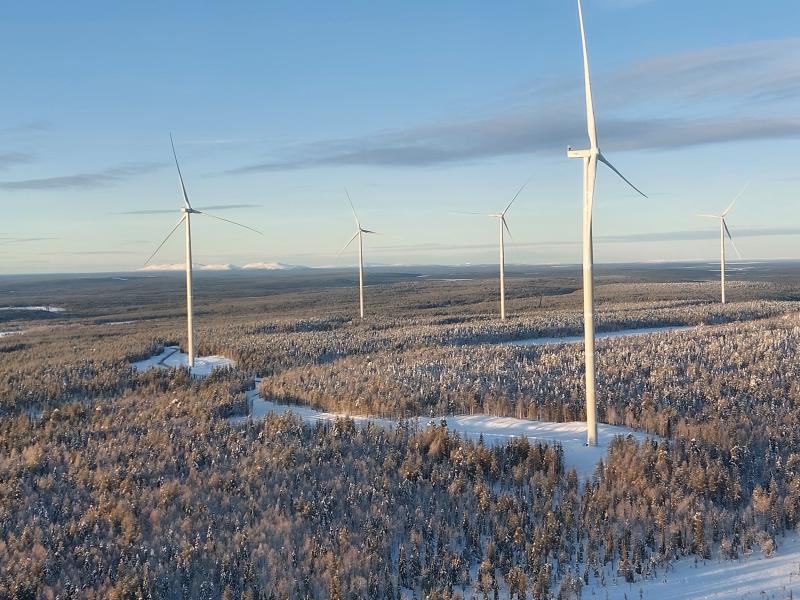In the fast-moving hydrogen economy transition, interdisciplinary research and impact assessment are needed
Hydrogen offers opportunities for Europe, both as an energy solution and in the manufacturing of products. With the EU's ambitious goals and regulation geared towards decentralized production, the hydrogen economy can also provide a significant boost to regional economies. However, the role of hydrogen in the green transition is only emerging and its sustainable integration into existing energy systems and infrastructures requires a comprehensive impact assessment. The Natural Resources Institute Finland (Luke) can play a key role in the interdisciplinary research of the hydrogen economy.
Hydrogen has recently been high on the public and policy agendas around Europe. The hydrogen economy as part of green transition has also attracted the attention of Luke's researchers and experts across research fields.
Luke's Research Scientist Kalle Aro and Principal Scientist Dr. Saija Rasi have studied hydrogen from different perspectives. Aro has researched the climate policy planning and low-carbon transition of energy systems, whereas Rasi has looked at biological hydrogen production and its utilization as methane.
The concrete steps to ambitious EU goals remain unclear - research can help
The EU sees hydrogen as a cornerstone of its future energy policy: according to its Hydrogen Strategy, green hydrogen could account for up to 20 % of the EU’s energy mix by 2050. While the goals are clear, the path to achieving them is still somewhat obscure.
"We are in the middle of a green transition, and we don't know how big the hydrogen economy will eventually become in Europe and how the value chains, for example, will emerge. We do not yet have a clear picture of the extent to which we want to produce energy and other products from hydrogen. Research can support decision-making when navigating these questions," Aro says.
Hydrogen as raw material for energy and other products
When talking about hydrogen as an energy solution, it is important to remember that hydrogen is being introduced into societies where the energy industry already has an extensive infrastructure network. All energy solutions have their own infrastructures for production, transmission and storage.
Kalle Aro therefore emphasizes the importance of integrating hydrogen systems with existing infrastructures. "In the worst case, hydrogen will be developed independently, creating unnecessary overlap and redundancy in the infrastructure. At best, hydrogen will become a key part of the energy system, providing stability, increasing self-sufficiency and reducing emissions through effective sector integration,” Aro says.
But the hydrogen economy is not just about energy transition. Hydrogen can be used also in replacing chemicals with renewable alternatives.
"Hydrogen can be used to make ammonia, methanol and methane, among others. As long as hydrogen is produced from renewable energy sources, such as wind or solar power, it can be used to replace products of fossil origin," says Saija Rasi. These chemicals can be used to make, for example, fuels, plastics or fertilizers.
When hydrogen is used as raw material for fuels or chemicals, carbon is needed. "For example Finland has an abundance of bio-based carbon, thanks to the forest industry. Bio-based carbon enables a more environmentally friendly end product," Rasi states
Boost for regional economies
Whether it is energy or other products made from hydrogen, their decentralized production brings economic potential to rural areas.
For example, Finland is now seeing a record number of wind and solar power plants being built, which enables fossil-free hydrogen production. "These plants will bring jobs and new business opportunities to the Finnish regions. On the other hand, their construction can also cause damage to the surrounding nature, local people and other industries," says Kalle Aro. Interdisciplinary expertise is needed to assess impacts and their trade-offs.
Biohydrogen production could be another important regional solution. Biohydrogen is hydrogen produced through biological processes from biomass, such as by-products of local circular bioeconomy. “Biohydrogen is always connected to the production of biogas or other bioproducts. In Luke we have expertise in finding the best solutions to various raw materials and local circumstances,” Saija Rasi tells.
Decentralized production and local solutions are also encouraged by the current EU regulation. According to Rasi and Aro, biohydrogen and the solutions it offers must be considered when developing the operational and policy framework for the hydrogen economy. "Biohydrogen comes from small streams, but they too have a role to play in the big picture," reminds Aro.
Luke and the hydrogen economy
At Luke, the links between the hydrogen economy and the circular bioeconomy, as well as hydrogen's role in green transition, are studied from the perspectives of natural, economic and social sciences. For example, Luke has already initiated research on the land use and biodiversity impacts of wind and solar power. In the field of hydrogen production and utilization, Luke's strength lies in the research of biological processes in particular. In addition, Luke's strong expertise in life cycle assessment enables the assessment of the environmental impact of both hydrogen production and hydrogen-based products.



